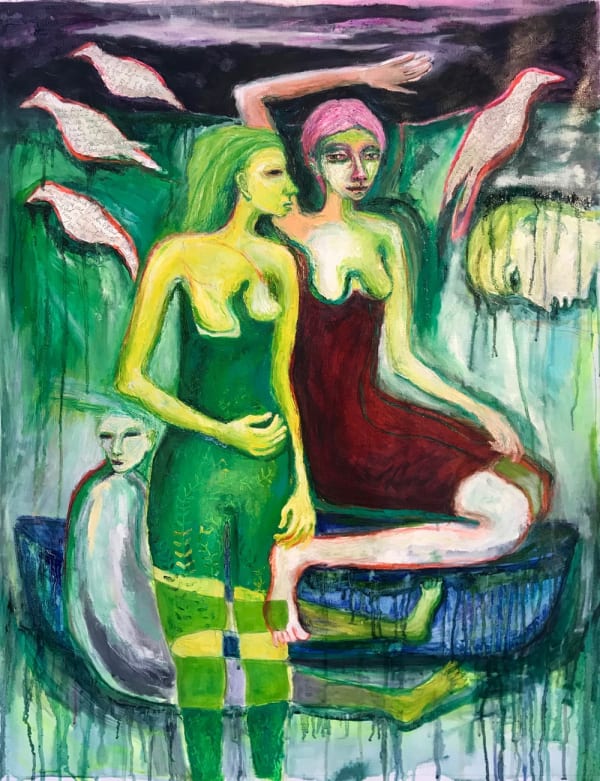Now on display, we have a brand-new collection by the acclaimed figurative painter Rebecca Swainston.
Following her much admired solo exhibition Embodyment at the start of the year, we welcome the opportunity to show her new collection. Colourful and richly textured, Rebecca's work explores the human condition - our thoughts, our desires, and vulnerabilities. Her figures have an otherworldly presence with imagery hinting at their stories, creating layers of meaning from a wide range of influences. Multi-faceted, they can be interpreted in different ways, with the viewer bringing their own references to the experience.
In 'The Girls Imbibe' ,Rebecca reflects on what we allow into our bodies and the consequences of that. Her thoughts are on addiction, seen in the details such as the glasses held by the two figures and the poppy patterns swirling around them, but more metaphorically, the painting reflects a time in a young person's life of freedom and fun. New experiences shape us as human beings and an openness to them is an important aspect of personal growth.
'Women and Paper Birds' , is also open to several readings. At first glance, the viewer gets a sense of a journey indicated by the boat behind the figures. In these times, the boat brings to mind refugees fleeing poverty and war-torn countries, but we can think of refugees not only in socio-political terms - we can all be moving away from something, be it circumstances or personal experiences. Another interpretation is that it is simply an illustration of the journey of life or the mind. The figures are surrounded by white birds with texts written on their bodies, pointing to the need for connection in messages, the wish to communicate with the place and the people we have left behind or to chronicle our experiences through life.
Rebecca says: "I am fascinated by the mind-body interaction and explore what is hidden or unconsciously revealed. Extra limbs and faces in profile express other moments or alternative events, blurring the line between thought, perception, and reality.’


